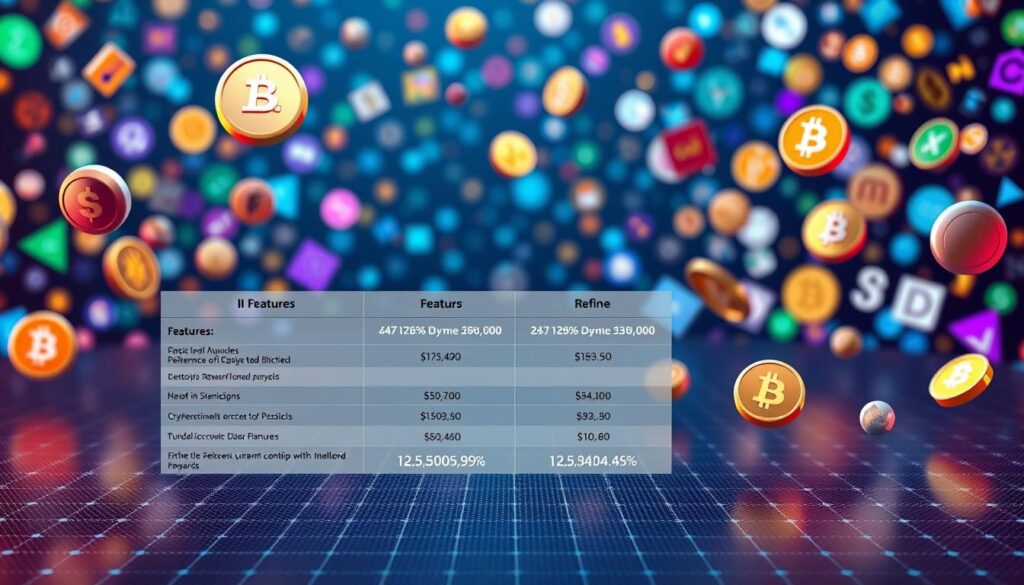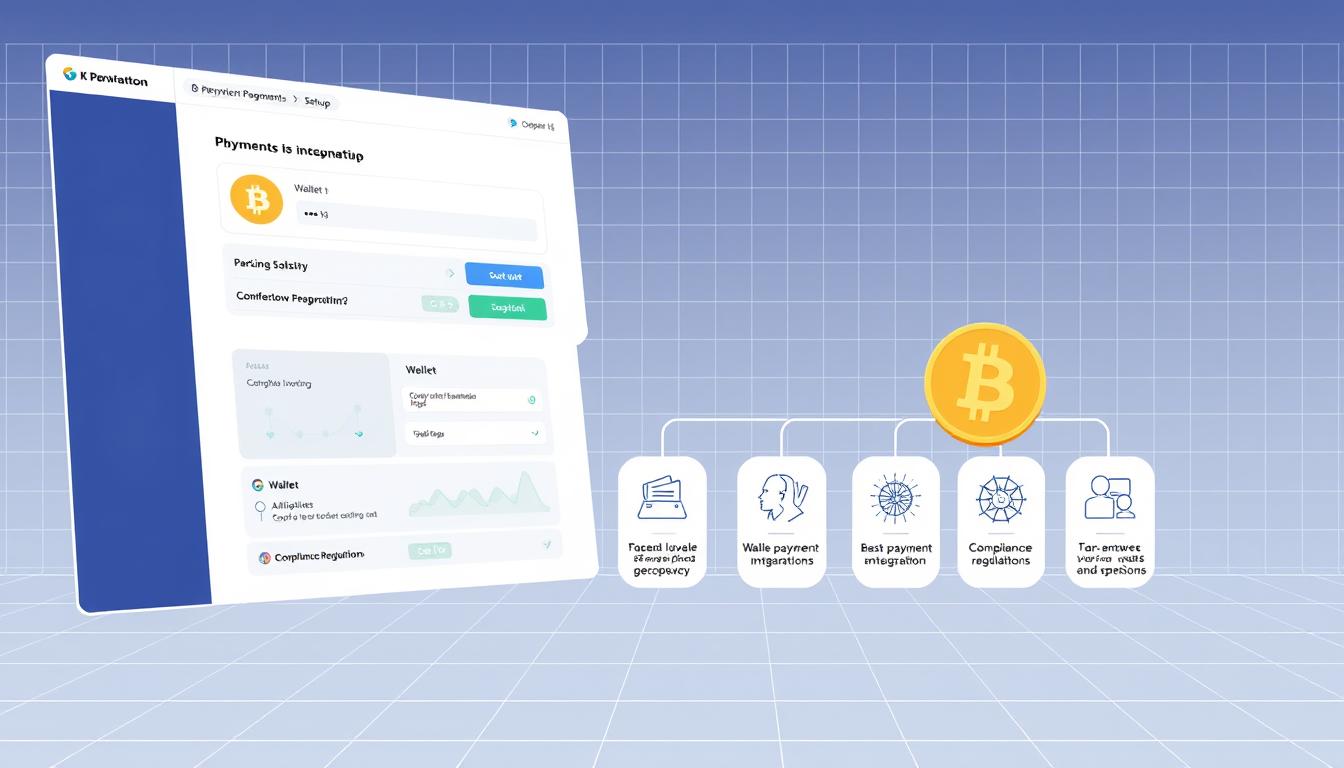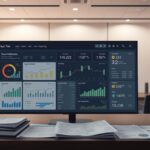Now Reading: Essential Crypto Research Tools for American Traders
- 01
Essential Crypto Research Tools for American Traders
Essential Crypto Research Tools for American Traders
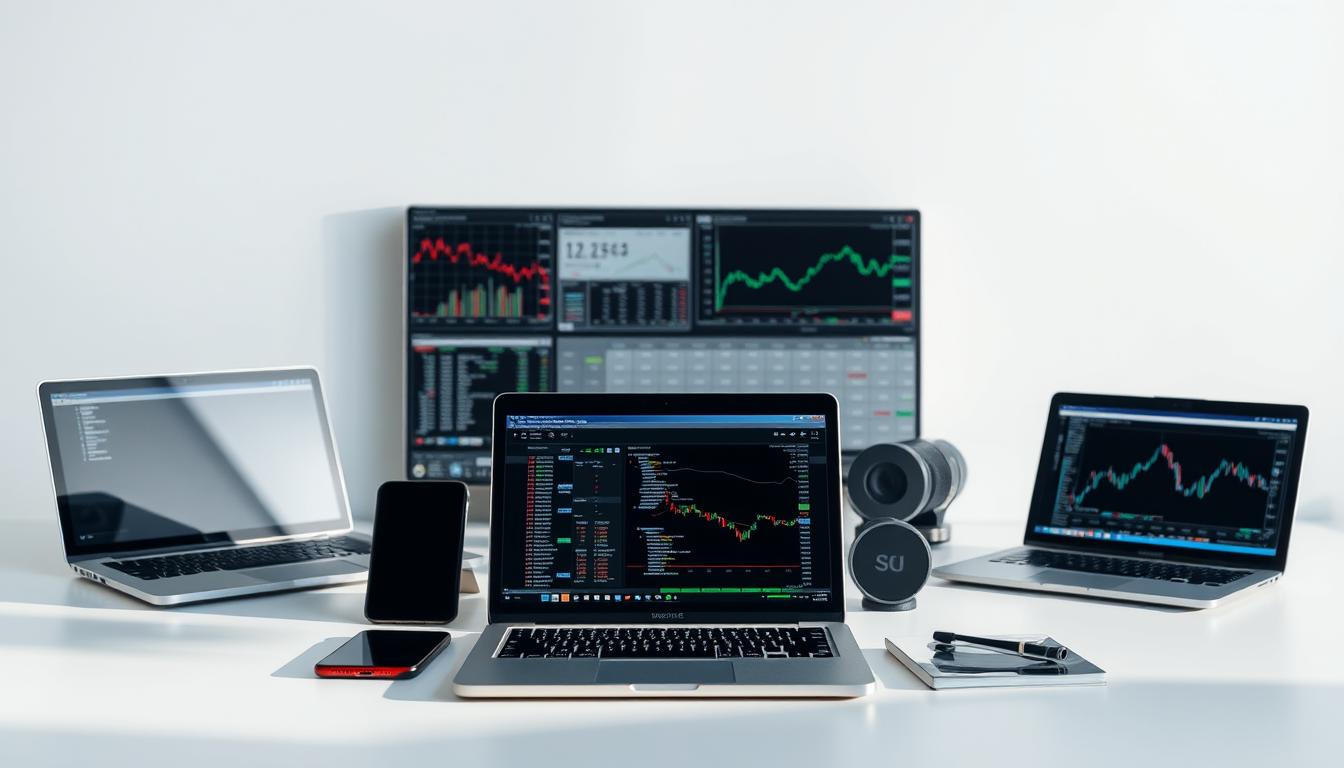
Crypto markets change quickly, and American traders must stay ahead. They face rules, price changes, and new projects every day. The right tools help them cut through the noise and make smart choices.
U.S. traders have special challenges like following rules and getting into markets. Top tools make it easier to track rules, understand trends, and compare projects. This guide shows the best tools for American traders to overcome these hurdles and increase profits.
From free apps to premium platforms, each tool helps reduce risk and improve strategy. They are all about making better decisions in the fast-paced crypto world.
Key Takeaways
- Quality research tools lower risk in volatile crypto markets.
- Regulatory compliance tools protect U.S. traders from legal issues.
- On-chain data and sentiment analysis tools are critical for accurate decisions.
- Free and paid options exist for all budget levels.
- Combining tools creates a stronger research strategy than using one alone.
Why Research Tools Are Critical for Cryptocurrency Trading Success
Cryptocurrency markets change quickly. Without good data, traders can make big mistakes. Cryptocurrency analysis software helps by turning data into useful information. It helps traders make smart choices, not emotional ones.
How Quality Research Reduces Risk in Volatile Markets
Tools like Glassnode and Santiment give real-time data. They help spot when prices might change. By looking at network hash rate or whale activity, traders can predict trends.
The Relationship Between Tool Usage and Trading Performance
Traders with cryptocurrency analysis software do better than those without it. Sites like TradingView and CoinMarketCap offer charts and trends. This helps traders know when to buy or sell.
Those who use these tools for a long time make 20-30% more than others.
What Sets Professional Traders Apart from Amateurs
Professionals rely on cryptocurrency analysis software for every choice. They check on-chain data, sentiment, and news. Amateurs follow trends without solid data.
Tools like Chainalysis and Coin Metrics help professionals stay ahead. The difference between success and failure often comes down to using these tools.
Understanding the Current Crypto Landscape in the United States
Regulatory changes and market shifts shape how US traders operate. The SEC, CFTC, and Treasury Department enforce rules affecting asset classification, trading platforms, and compliance. These agencies prioritize investor protection while balancing innovation.
- SEC: Focuses on security tokens and fraud prevention
- CFTC: Oversees crypto derivatives and exchange oversight
- Treasury: Enforces anti-money laundering (AML) and reporting requirements
State laws add complexity. California and Wyoming offer contrasting approaches—California imposes strict licensing, while Wyoming welcomes crypto businesses. Traders must comply with local rules to avoid legal risks.
Market trends reveal opportunities and challenges. Exchanges like Coinbase and Binance US dominate, with BTC/USD and ETH/USD as top pairs. Liquidity gaps exist for smaller coins, requiring tools to track real-time data. Experts recommend tracking trends to spot shifts in volatility and volume.
Navigating this landscape demands the right top crypto tools for trading. Compliance checklists, real-time regulatory updates, and state-specific data integrations help traders stay informed. Understanding these factors ensures tools align with both legal requirements and market realities.
The Best Crypto Research Tools for American Traders: Our Top Picks
Choosing the right digital currency research platforms is key. It can turn informed decisions into reality. Here are the top tools for U.S. traders, sorted by value, ease of use, and convenience.
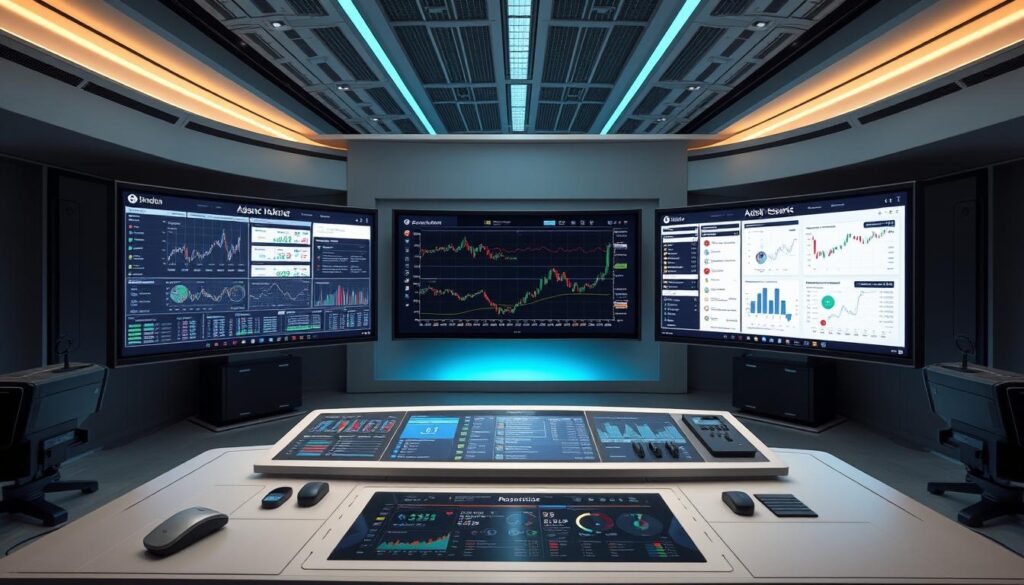
Premium Tools Worth the Investment
Paid tools like CoinMetrics and Santiment offer deep insights. CoinMetrics gives detailed price and volatility data. Santiment tracks transaction patterns with on-chain analytics.
Both work well with U.S. exchanges like Coinbase and Binance.US. This ensures they follow local rules. Annual subscriptions start at $1,200, but their advanced analytics are worth it for serious traders.
Free Alternatives That Deliver Results
For those watching their budget, CoinMarketCap and CryptoCompare are great. They offer market cap rankings, price charts, and basic trend analysis. They might not have all the bells and whistles, but their data is solid.
Tip: Use free tools with paid upgrades for key insights without the full cost.
Mobile-Friendly Options for Trading on the Go
TradingView and Blockfolio are perfect for mobile analysis. TradingView’s app has all the features of its desktop version. Blockfolio tracks your portfolio and alerts you to price changes.
Both apps work with U.S. banking systems. This lets you act fast on your findings.
Fundamental Analysis Platforms to Evaluate Crypto Projects
Before investing in a cryptocurrency project, it’s key to understand its core. Leading crypto market research tools make this easier. They gather data on technical, community, and economic aspects. This helps traders see a project’s long-term value, not just its short-term price.
On-Chain Analytics Tools
Tools like Glassnode and Nansen break down blockchain data. They show how projects are used in real life. For instance, Etherscan tracks whale transfers, hinting at market changes.
Project Evaluation Frameworks
Platforms like Messari and CoinGecko’s Fundamentals score projects. They look at whitepapers, team skills, and tokenomics. These scores compare projects, showing strengths and weaknesses.
Community and Development Activity Trackers
GitHub commit history and Socialsent scores show development pace. Discord Analytics checks community health. CoinMetrics tracks updates. Active development means a project is likely to last.
Technical Analysis Tools for Timing Your Trades
Technical analysis tools are key for cryptocurrency traders looking for the best times to buy and sell. Advanced cryptocurrency analysis tools like TradingView and Bybit’s platforms help users understand price movements. They offer customizable charts and crypto-specific metrics, making it easier to navigate the market’s ups and downs.
- Charting & Indicators: Tools with crypto-native metrics include Bitcoin futures funding rates and Ethereum liquidation trackers, visible on platforms like TradingView.
- Pattern Recognition: Automated detection of head-and-shoulders patterns or bullish engulfing candles helps traders act quickly on reversals.
- Backtesting: Simulate strategies using historical data from 2017–2023 to stress-test entry rules and risk parameters.
Real-time alerts from tools like Bybit’s mobile app notify users of key resistance breaks or sudden whale activity. Algorithmic platforms like QuantConnect let traders code strategies using Python, automating execution based on on-chain data. These advanced cryptocurrency analysis tools also visualize order book depth, revealing institutional positioning in real time. Traders using these systems reduce guesswork, focusing on actionable signals rather than speculation.
Tools with multi-timeframe analysis—like 1-minute charts for scalpers or weekly views for Hodlers—ensure flexibility. Integrations with exchanges like Coinbase or Binance further streamline execution. By prioritizing these features, traders gain clarity in chaotic markets, turning technical insights into profit opportunities.
Market Sentiment and Social Listening Platforms
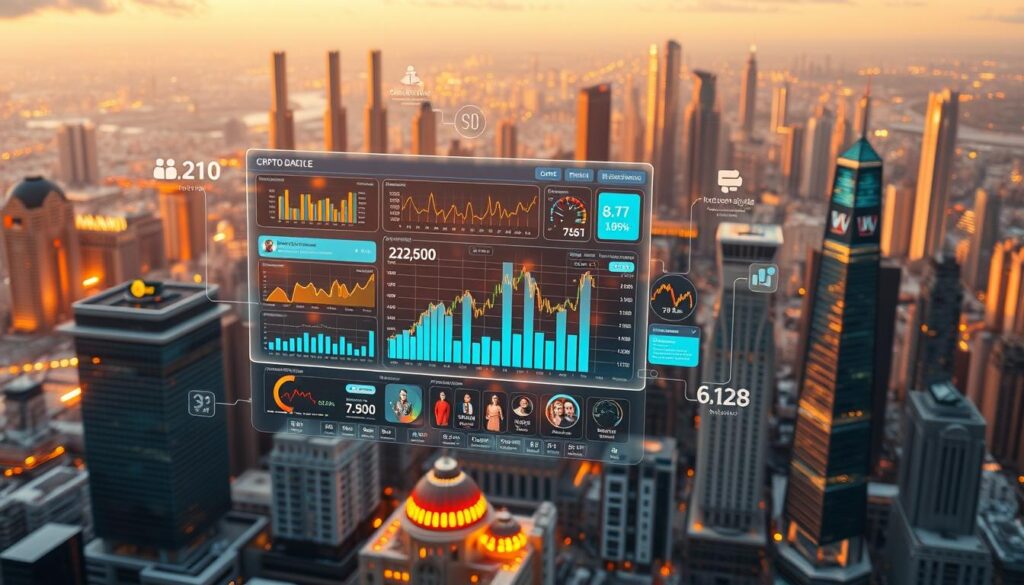
Sentiment analysis is a top choice for crypto traders in the US. It helps them understand the emotional trends behind price changes. Tools like Socialsentiment and Crypto Twitter Analytics track conversations on Twitter, Reddit, and Discord.
They flag sudden changes in positive or negative talk. These tools use AI to score sentiment, showing how public opinion matches or doesn’t match price changes.
Social Media Analysis Tools
- CryptoSlate’s Social Volume Tracker monitors conversation spikes for major coins
- BitInfoCharts analyzes Reddit post sentiment for 50+ cryptocurrencies
- Discord channel activity dashboards from tools like CoinGecko highlight community engagement trends
News Aggregators and Trading Decisions
Platforms like CoinDesk and The Block focus on US crypto news. They provide APIs for alerts on SEC news or new exchange listings. NewsBTC categorizes news by impact, helping traders focus on what’s important.
Fear and Greed Indicators
The Fear & Greed Index from traditional finance has crypto versions like Santiment’s Network Value Ratio. Traders watch these during market extremes. When the index shows “extreme fear,” some see buying chances; “extreme greed” warns of overextended markets.
Tools like Crypto Fear & Greed show sentiment vs. price on charts.
Advanced Cryptocurrency Analysis Tools for Experienced Traders
Experienced American traders need top-rated research tools for American traders for deep analysis. Tools like CoinMetrics and Glassnode show hidden market secrets. They track order flow and show liquidity, helping traders make smart moves.
Platforms like Bybt find arbitrage chances by comparing prices worldwide. This helps traders find the best deals.
- Liquidity Mapping: Tools like Nomics track real-time liquidity pools and volatility surfaces to spot entry/exit points.
- Derivatives Insights: Platforms such as Coinglass analyze futures funding rates and open interest to gauge institutional sentiment.
- API Capabilities: Many tools allow custom data extraction and algorithmic strategy automation via Python or REST APIs.
Skew has stress-testing modules for risk management. They simulate crashes to prepare for the unexpected. Tools like QCP Capital’s Risk Framework use machine learning to predict price changes.
These tools are worth the cost because they offer detailed reports and portfolio optimization. They help traders stay ahead in the market.
Traders can test strategies with historical data or automate trades with API integrations. Platforms like FTX and Binance support this. They also provide custom code and detailed reports for high-stakes trading.
Portfolio Tracking and Management Solutions
Managing a crypto portfolio is more than just watching prices. Top platforms now have tools for tax compliance, tracking performance, and integrating exchanges. These are key for US traders. They save a lot of time and make sure reports are accurate.
Tax Compliance Features for US Traders
Platforms like CoinTracking and Koinly make tax calculations easy. They create IRS Forms 8949 and Schedule D for you. They also watch for wash sales and keep track of all transactions.
They update in real-time to keep up with changing tax rules.
Performance Analytics and Reporting
The top crypto analytics platforms look at ROI and compare it to market standards. They also show risk through drawdown charts. Tools like Santiment mix on-chain data with portfolio stats.
This gives insights into how volatile assets are and what trends are happening.
Integration Capabilities with Exchanges
- API connections to Coinbase, Binance, and Gemini ensure real-time data sync
- Two-factor authentication secures data transfers between platforms
- Historical import tools allow seamless migration of legacy holdings
These features cut down on manual work, reducing errors in tracking across multiple exchanges. Real-time updates make sure all transactions show up right away in analytics dashboards.
Regulatory Compliance Tools Specific to American Traders
American crypto traders need tools that make U.S. regulations easier to follow. Now, top resources include platforms that track updates from the SEC, CFTC, and FinCEN. These tools help by showing when rules change and how they affect trading plans.

- Automated alerts for regulatory actions like SEC enforcement orders
- Screening tools to flag tokens classified as securities
- AML/KYC documentation checklists
- Restricted token databases blocking sanctioned assets
- FBAR reporting integrations for large transaction tracking
Platforms like Nomics Compliance Suite and Chainalysis React offer SEC filing analysis. CoinRegs alerts keep traders updated on legal restrictions. Tax tools, such as Koinly, make IRS reporting easier.
Using these tools helps avoid fines and keeps traders in the market. Dashboards now map state crypto laws, helping traders follow local rules. This is key as enforcement actions increase, protecting U.S. traders while they stay competitive.
How to Evaluate the Quality of a Crypto Research Tool
Choosing the right best crypto research tools for American traders is crucial. Start by looking at three key areas: data reliability, usability, and support. This approach helps traders pick tools that improve their performance.
Data Accuracy and Sources
First, check where the data comes from. Make sure sources are clear and updated often. Tools without current data or past records won’t meet trader needs.
Look for tools that use standard market methods to normalize data. Compare data from different platforms to find any errors. Tools with unverified sources or inconsistent data should be avoided.
User Interface and Experience
Good cryptocurrency analysis software has an easy-to-use design. It should have:
- Customizable dashboards
- Mobile responsiveness
- Keyboard shortcuts
Tools with messy layouts or bad mobile access slow you down. Try the tool during live trading to see how it works in real life.
Support and Community Resources
Top tools offer detailed guides, live chat, and active forums. Check:
- How fast they answer customer questions
- If they have training materials
- How active their community is
Tools without these resources can be useless during big market changes. Use this checklist to compare tools:
- Data source transparency and update schedules
- UI customization and mobile readiness
- 24/7 support availability
Common Mistakes When Using Digital Currency Research Platforms
Many traders think advanced tools alone will lead to success. But, over 40% of new users make big mistakes with digital currency research platforms, says OS Academy’s analysis. These errors can cause losses, even with the best top crypto tools for trading. Let’s look at the three biggest mistakes.
Overreliance on Single Data Points
Traders often focus on just one metric, like RSI or price trends. For example, a Bitcoin investor might buy just because RSI is “oversold” (below 30), without looking at the bigger picture. This ignores important factors like regulatory changes or network hash rate. Use top crypto tools for trading like TradingView or CoinGecko for a full view.
Ignoring Tool Limitations
Platforms like Etherscan or Cointelegraph’s sentiment analysis have their limits. On-chain tools might not show real-world adoption, and sentiment data can be slow to catch up. Not knowing these limitations can lead to missing important information. Always check if the data is up-to-date and accurate.
Failing to Cross-Reference
Never rely on just one source. A trader using only one platform’s news might miss other digital currency research platforms reports. Check price trends on CoinMarketCap against on-chain data from Nansen to spot differences. This helps avoid acting on incomplete or old information.
Tools are only as good as the user’s skill. By combining top crypto tools for trading with careful analysis, you can turn data into real strategies, not just numbers.
Cost-Benefit Analysis: Free vs. Paid Cryptocurrency Research Tools
When picking between free and paid leading crypto market research tools, think about your trading goals. Free tools give basic charts and price data. But, advanced cryptocurrency analysis tools offer deeper insights. Paid options like CoinMetrics or Nomics provide real-time data and historical records, worth the cost for serious traders.
- Data freshness: Free tools might be delayed by minutes, while paid services update in real-time.
- Customization: Advanced platforms allow users to create custom alerts and test strategies. This is rare in free tools.
- Support: Paid plans usually include customer support and educational resources.
The cost of paid tools can be worth it. A $50/month leading crypto market research tools subscription might save you from a bad trade. For instance, Etherscan’s Pro plan alerts users to whale activity, which can signal big price changes.
Hybrid strategies are effective: Use free tools like CryptoCompare for general trends, then invest in paid subscriptions for detailed analysis. U.S. traders: Subscription costs might be tax-deductible if used for trade decisions.
Advanced traders often use advanced cryptocurrency analysis tools from multiple platforms. A $200/month bundle covering on-chain data and sentiment analysis could reduce losses by 15% annually for portfolios over $100k. Smaller traders might focus on free tools with a few paid add-ons.
Building Your Personal Research Stack: Combining Tools for Maximum Insight
Every trader’s research needs are different. Start by finding the right tools that match your goals and budget. A good stack turns data into insights, helping both new and experienced traders.
Beginner Setups Under $50/Month
Beginners can start with free and low-cost tools. Use CoinMarketCap for free data and CoinGecko for market trends. Add Blockfolio for tracking your portfolio and Twitter X for sentiment analysis.
These tools are affordable and cover important areas like price charts, fundamentals, and social signals.
Mid-Level Research Configurations
Traders looking to grow need more advanced analytics. Mix TradingView Pro for detailed charts with Nansen’s on-chain data. Include Telegram channels for community insights.
This setup costs $50–$250 monthly. It offers backtesting and real-time alerts, helping you make better decisions.
Professional Trading Desks and Their Tool Selection
High-stakes traders use Messari for deep project analysis and Chainalysis for compliance. They also use 0x API for algorithmic trading. These top-rated research tools for American traders cost over $250/month.
They provide high-quality data feeds and allow for team collaboration. This is essential for serious traders.
Choose tools wisely. Use one for charts, one for tracking, and one for sentiment. Your stack should grow with your strategy, ensuring each tool has a unique role.
Future-Proofing Your Crypto Research: Emerging Tools and Technologies to Watch
New AI tools are changing how we analyze crypto, with best crypto analytics platforms using machine learning. They predict trends and find unusual patterns. This helps traders keep up with quick market changes.
Tools like Glassnode and Nansen track how the network is used. They show us what big players are doing and how well protocols are working. Decentralized oracles, like Chainlink, bring real-world data into blockchain systems. This makes our analysis even better.
Social tools, such as Santiment, watch how communities interact and vote on proposals. This gives us a deeper look into projects.
AR/VR is creating 3D views of market data. This lets traders see patterns in a new way. Tools for following U.S. laws are also getting better. This makes sure traders stay legal as technology improves.
To stay ahead, we need to check out new tools and use top research resources. Learning constantly through these platforms helps us keep up with new things. Choosing tools that use AI, follow rules, and offer real-time data will help us stay competitive.
FAQ
What are the best crypto research tools for American traders?
Top tools for American traders include CoinGecko for market data and Glassnode for on-chain analytics. TradingView is great for technical analysis. Each tool has unique features to help traders understand the crypto market.
How do I choose the right cryptocurrency analysis software?
Look at data accuracy, usability, and integration capabilities. Also, consider the features that fit your trading strategy. Read user reviews and try trial versions to find the best fit.
Are there any free crypto analysis tools that are effective?
Yes, free tools like CoinMarketCap and CryptoCompare are useful. They track prices and volumes, and help with portfolio management. They’re good for beginners but have fewer features than paid options.
What role does technical analysis play in crypto trading?
Technical analysis is key for timing trades in the crypto market. Tools with charting and indicators help traders spot trends. This leads to better entry and exit decisions.
How can market sentiment affect my trading strategy?
Market sentiment insights from social listening platforms are crucial. They show trader psychology and market movements. Tools that analyze social media and news help traders make informed decisions.
What are the benefits of using advanced cryptocurrency analysis tools?
Advanced tools offer features like order flow analysis and algorithmic strategy development. They help experienced traders make better decisions and increase potential returns.
How do portfolio tracking solutions assist with tax compliance?
Portfolio tracking solutions automatically calculate capital gains and generate tax forms. They simplify tax filing for cryptocurrency transactions, ensuring compliance with IRS regulations.
What should I consider when evaluating the quality of a crypto research tool?
Look at data accuracy, user interface, customer support, and community resources. A thorough evaluation helps choose tools that improve your trading efficiency.
Can sentiment analysis improve trading outcomes?
Yes, sentiment analysis can give you an edge. It helps you understand market emotions and predict price movements. This leads to better investment timing.
Are there tools designed specifically for compliance with US regulations?
Absolutely, there are tools for American traders that follow US regulations. They track regulatory changes and help with reporting. This reduces legal risks in crypto trading.


